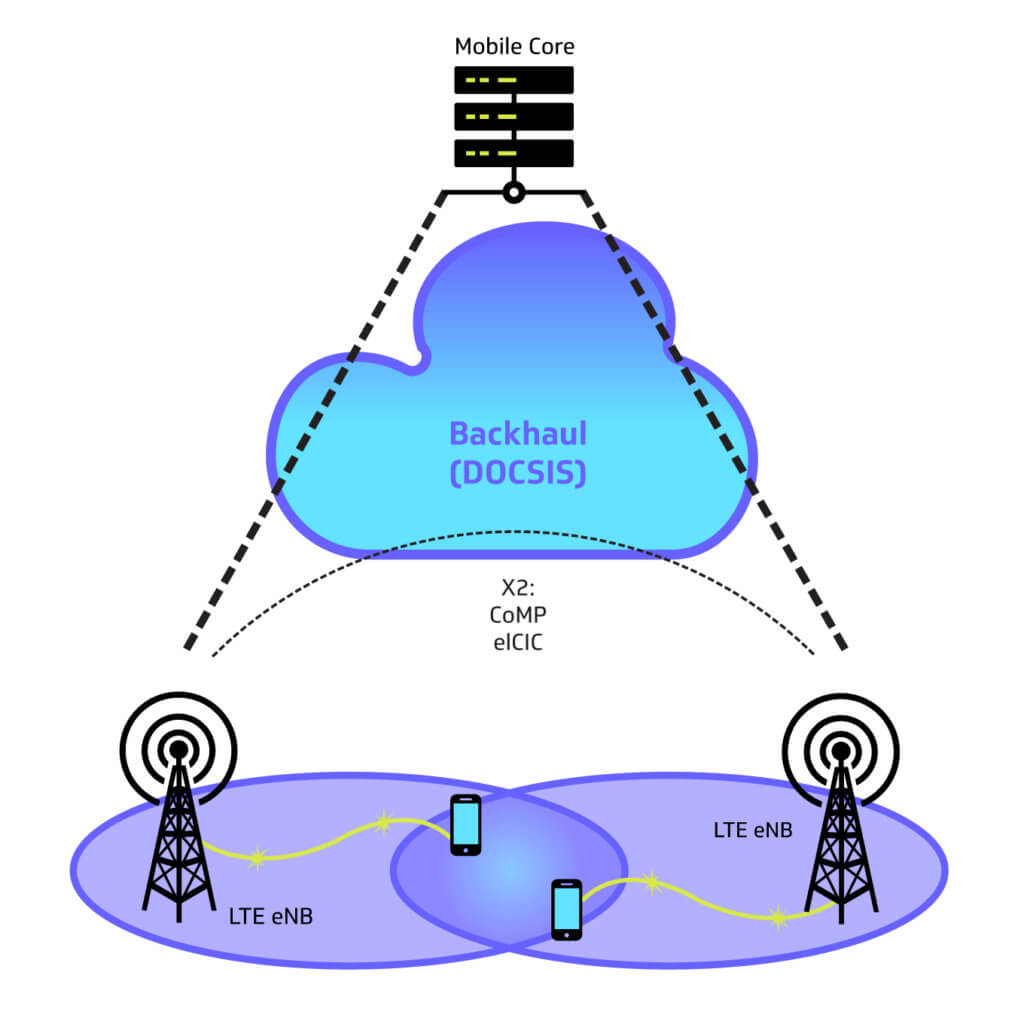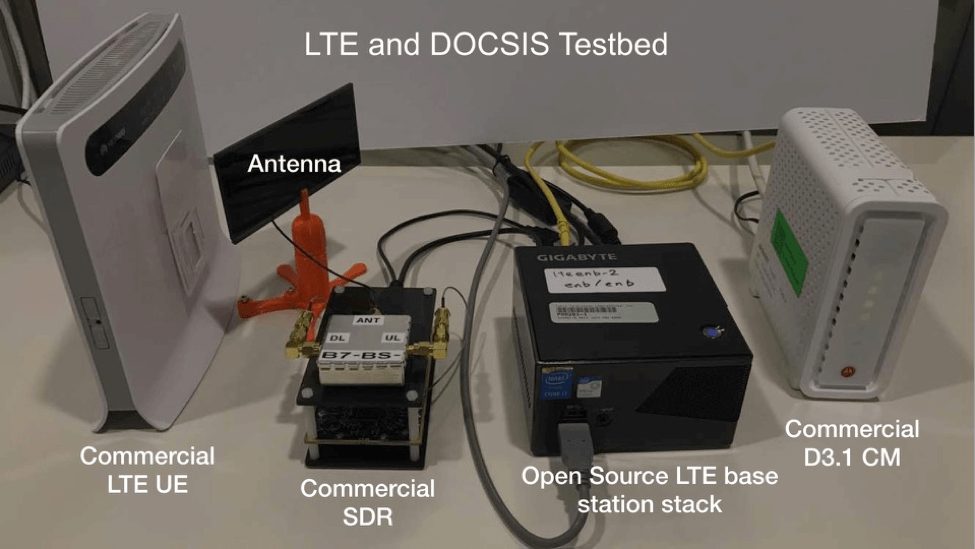DOCSIS
Powering the Future of Mobile Backhaul

The wireless ecosystem is a rapidly moving marketplace, and the next milestone is the large-scale deployment of small cells to augment network capacities and to support 5G deployments. There are three main elements required to deploy small cells:
- Location
- Power
- Backhaul
These requirements put cable operators, many of whom are also mobile operators, in an advantageous position for deploying mobile small cells.
According to the NCTA, 93% of US households are reachable via the hybrid fiber coaxial (HFC) network. While the HFC provides the necessary elements for deploying small cells, the cable infrastructure can further extend its capabilities by offering low latency mobile backhaul. Reducing latency in the DOCSIS® network will unlock that additional potential for cable operators.
Backstory
Small cells are deployed to provide capacity or coverage augmentation for the macrocell network. This results in overlapping coverage areas between the various cells (between small cells and small cells, as well as between small cells and macrocells). There is significant interference generated in these overlapping areas, as the user can hear multiple cells’ transmissions. In order to provide a good quality experience for these users, the mobile operator needs to deploy advanced interference management techniques that are currently supported by LTE-Advanced and LTE-Advanced Pro. But, for these techniques to work well, adjacent cells need to be able to talk to each other quickly - at a latency of generally no more than 5 milliseconds. And because these cells talk to each other through the DOCSIS backhaul network, the DOCSIS round-trip latency must be 5 ms or less. This is not achievable today. See Fig. 1:

Fig. 1: DOCSIS backhaul supporting LTE X2 interface for LTE-A and LTE-A Pro features
Searching for Solutions
We found that traditional cable equipment suppliers were also innovating in this space and working on enabling DOCSIS to provide better mobile backhaul. Together with my colleague John Chapman, Cisco Fellow and CTO Cable Access, we came up with a simple solution that reduces the DOCSIS upstream latency to 1-2 ms consistently. We developed a proof-of-concept (PoC), each supplying expertise and resources in the mobile and CMTS space.
Looking closely, LTE and DOCSIS are two independent systems – their operations occur in serial. The overall latency is the sum of the two system latencies. The two technologies have similar mechanisms to access the channel, and that is through a request-grant-data transfer loop.
Here comes the lightbulb moment: The LTE loop is much longer than DOCSIS, resulting in much higher latency than DOCSIS. This presents a hidden opportunity for DOCSIS. Rather than waiting for the LTE transaction to complete and then start the request process on the DOCSIS side as it is today, we proposed that LTE tell DOCSIS about the data that is on its way so that the DOCSIS request process can start earlier and in parallel with the LTE transaction. This will lead to much lower overall system latency. This is illustrated in Fig. 2:

Fig. 2. Pipelining LTE and DOCSIS operations. (REQ-UE: LTE request; GNT-UE: LTE grant; REQ-CM: DOCSIS request; GNT-CM : DOCSIS grant; BWR: bandwidth report)
Industry Partnership
Our joint team worked together on perfecting the pipelining operation and designing a new message called the “bandwidth report,” or the “BWR.” This simple solution reduces the DOCSIS upstream latency to a consistent 1-2 ms.
To build the proof-of-concept (PoC), we inserted a minimal amount of code into an open source LTE small cell and added an API on the Cisco cBR-8, enabling the CMTS to optimize its scheduling and to align it with the small cell transmissions in real time. We demonstrated the PoC to cable operators and received very positive feedback. See Fig. 3:

Fig. 3. LTE Open Air Interface (OAI) and Cisco cBR-8 CMTS testbed
Our proof-of-concept was also demonstrated recently in the Cisco booth at SCTE Cable-Tec Expo 2017, as Cisco explains here. The next step for this is to make the solution available industry-wide by standardizing it through CableLabs and have it ready for the HFC network to be at the forefront of the mass deployment of small cells.
I will be holding a webinar with John Chapman in early 2018. You can find more information here.

